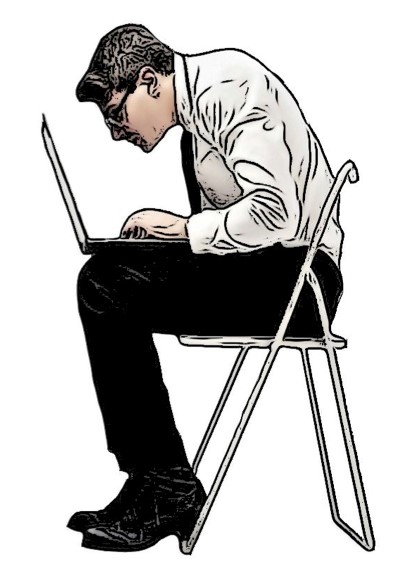
Tips for a Healthy Office Setup
For many of us, a typical day can involve hours of sitting in front of a desk. When you have a seemingly never-ending list of tasks to complete, your long-term health can be the last thing on your mind. However, we know that prolonged sitting, especially in a poorly set-up workspace can have a huge impact on your body in the long term. Below are some tips that can help you set up your workstation properly.
Chair Setup
The height of your chair should be adjusted so your feet are flat on the floor and your thighs parallel to the floor. Your arms should be able to rest comfortably at the height of the desk. Arm rests should be low enough that elbows can be bent between 90-110 degrees and not winged out. Hands, wrists, and forearms should be in a neutral position and parallel to the floor. A cushion (like a rolled towel) may be added on the chair to add support for the lower back. If the chair is too high, you can use a footrest to make sure your feet are rested comfortably.
Desk Setup
A 20-to-40-inch distance of the monitor from your face is advisable to reduce eye strain. Place your keyboard at the center of your desk, which should be 1-2 inches above your thighs. You want the monitor and keyboard to be directly in front of you. Keep the mouse within easy reach of your keyboard. The top of the screen should be slightly below eye level.
Other tips for setting up your workstation include:
• Put everything you need within easy reach.
• Don’t slouch. Practice moving in and out of a good posture.
• Stand up to reach anything that can’t be comfortably reached while sitting.
• Take active breaks from sitting every half hour or hour. Set an alarm that reminds you get up and stand and stretch for ten seconds then sit back down.
Transitioning to a standing desk:
Even better than all these tips is to set up a standing work desk. Many people are making the switch to a movable working desk that allows you to spend periods of your working day on your feet with great results. Here’s some advice to make the transition a smooth one.
• Get in the habit of standing for certain tasks and sitting for others. For example, complete repetitive tasks, phone calls or data entry while standing and more complex tasks while sitting.
• Reconsider your footwear. When standing, your feet and their support become more important than when you’re sitting all day. More comfortable shoes might be a worthy investment.
• Slowly increase the amount of time you spend standing to allow your body to adjust.
Please click the download button below to print out a free copy of our newsletter.
Physio Direct is ACC accredited so you can come to us directly to get an injury registered with ACC without having to go to your GP first, followed by an assessment, treatment and follow up review, to ensure correct care and recovery. Physio Direct can also refer you directly for Cortisone injections, X-Rays and Ultra Sound Scans and on to Specialists if needed.
Please feel free to print out these news letters and put the in the staffroom and hand them out to your team. Understanding more about injuries, gives people the power to prevent an injury from occurring in the first place. Prevention and education is the key!
